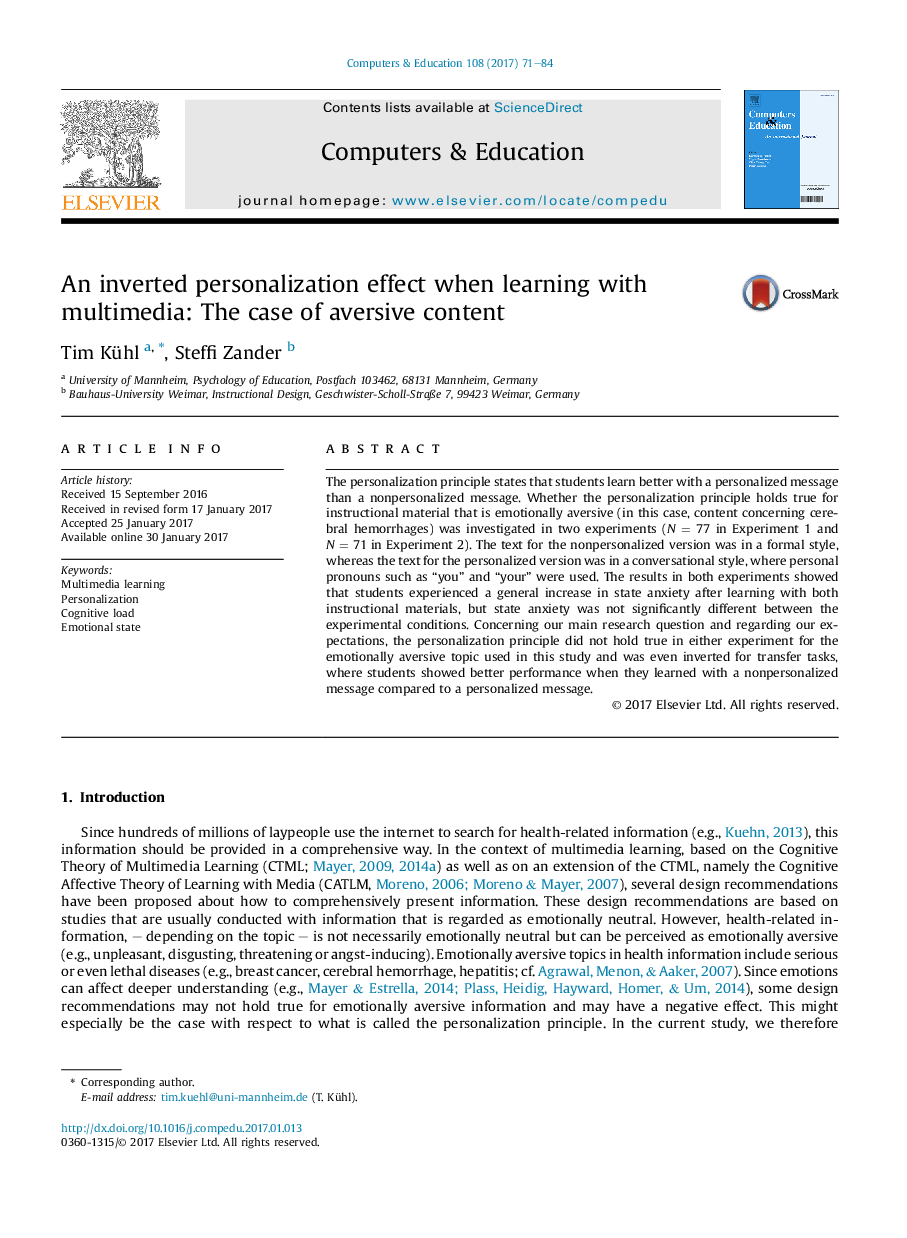| Article ID | Journal | Published Year | Pages | File Type |
|---|---|---|---|---|
| 4936915 | Computers & Education | 2017 | 14 Pages |
Abstract
The personalization principle states that students learn better with a personalized message than a nonpersonalized message. Whether the personalization principle holds true for instructional material that is emotionally aversive (in this case, content concerning cerebral hemorrhages) was investigated in two experiments (NÂ =Â 77 in Experiment 1 and NÂ =Â 71 in Experiment 2). The text for the nonpersonalized version was in a formal style, whereas the text for the personalized version was in a conversational style, where personal pronouns such as “you” and “your” were used. The results in both experiments showed that students experienced a general increase in state anxiety after learning with both instructional materials, but state anxiety was not significantly different between the experimental conditions. Concerning our main research question and regarding our expectations, the personalization principle did not hold true in either experiment for the emotionally aversive topic used in this study and was even inverted for transfer tasks, where students showed better performance when they learned with a nonpersonalized message compared to a personalized message.
Related Topics
Social Sciences and Humanities
Social Sciences
Education
Authors
Tim Kühl, Steffi Zander,
